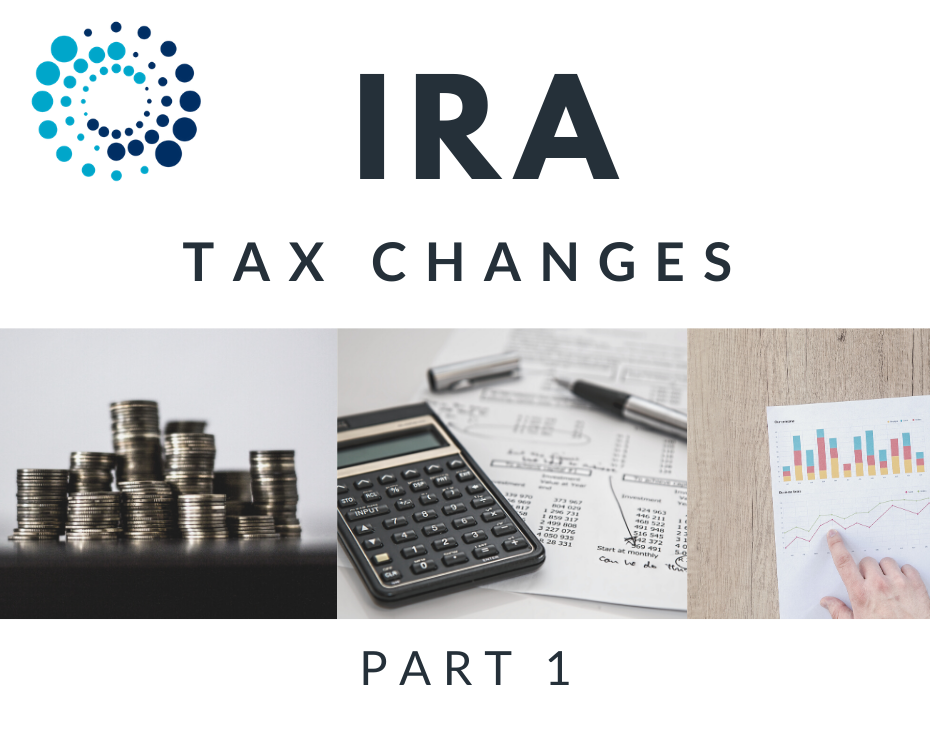Have you heard about the new tax changes? Now is the time to start understanding these changes and determining if you need to make revisions to your estate plan. I would like to discuss a small part of the Act, as it relates to the use of Individual Retirement Accounts as estate planning tools. I am just getting my head wrapped around these new provisions, so excuse me as I work it out along with you. You are encouraged to speak to your Accountant or Financial Advisor to learn more.
The main thing you need to know is that an IRA can still be a good retirement planning tool for you. However, there are now distribution limits and a 10-year payout obligation. For those with smaller retirement assets, the ten year payout may not have much of an impact. Note that for most people your estate plans will still function, but they, unfortunately, will not work the way you thought they would.
What is the new tax law?
The SECURE Act (The Setting Every Community Up for Retirement Act) passed in the US House of Representatives, so now we are “taxed” with learning the ins and outs. The Act addresses retirement savings and encourages people to use their retirement savings when retired (rather than using that money to fund their children or grandchildren in the future).
What you need to know?
The Act has eliminated the IRA stretch (as of December 31, 2019), and turned it into a “swift payout.” The “life expectancy payout” has changed to a 10-year payout. For 30 years, people have been using the “stretch IRA.” Previously, people would put a lot of their money in their IRA’s for tax savings and then designate beneficiaries for after their deaths. The beneficiaries, usually much younger, would then take annual distributions over their lifetime. The “stretch” could have continued for as long as 80 years. The payout period has all changed.
Are there any exceptions?
The Act makes exceptions for certain types of beneficiaries. They are called Eligible Designated Beneficiaries. These are: 1) surviving spouse; 2) minor child of participant; 3) disabled/chronically ill; 4) people less than ten years younger than the employee. It is important to consider designating these types of beneficiaries when the IRA trust contains a large amount of assets. In those cases, the IRA may still be used as a way to spread out the income to the beneficiary over time.
What should I do now?
Analyze your plan to avoid tax hits.
- Determine if any of your beneficiaries are in the exempt category.
- Leave traditional retirement benefits to a charitable remainder trust if the beneficiaries are over 30. (Note that a substantial amount of the money will go to charity, but the trust can provide a lifetime payout to human beneficiaries.)
- Consider Roth conversions if the IRA owner is in a lower tax bracket than the beneficiaries. (It makes sense only in some cases—talk to a financial planner).
- Consider obtaining life insurance to pay the expected taxes.
Communicate with beneficiaries
You should try to find a way to reduce your tax hit. If you currently have an IRA, you must decide if any changes need be made now, or in the future. Communication with beneficiaries is key. They need information to assist them in dealing with the income tax associated with a payout of the IRA trust assets, in order to reduce or avoid the taxes. Coordination with other aspects in the beneficiaries lives will be necessary to make sure other things they are doing (selling a house with capital gains) won’t create tax consequences. If you cannot, consider buying life insurance to help pay the income tax bill after your death.
With the new changes, it may be a better idea to put just enough money into the IRA that would give the earner distributions over their lifetime, plus ten years. Again, talk with someone you trust that has knowledge about these new tax laws.
Did the Act Change Qualified Tuition Plans?
Just as an FYI, the Act expanded options with respect to 529 plans for education. For instance, you may use 529 distributions of up to $10,000 annually to pay for homeschool expenses, elementary/secondary school expenses, religious education and apprenticeships. A person may carefully consider placing money into a 529 plan if the IRA contributions have already been maxed.
Stay tuned for more blog articles on the SECURE Act as it pertains to IRA’s as we continue to learn more and decide how this impacts our estate planning.
Based out of Tampa, Florida, Lori is mom to a fantastic 5-year-old boy. They love to go on local adventures, travel and play with matchbox cars for seemingly endless hours. Lori enjoys reading classic novels, organic gardening, and studying languages with her son. She considers herself well-versed in Seinfeld and welcomes any trivia!
Disclaimer: The Law Office of Lori Vella’s website contains general information directed to Florida residents. This firm does not intend to give legal advice through its pages and/or blog. If you need legal advice, we encourage you to find an attorney licensed in your state. This language on this website does not create an attorney-client relationship between you and this firm.


Pingback: What You Need to Know if you Have an IRA (SECURE Act changes) Part 2 - Law Office of Lori Vella, PLLC